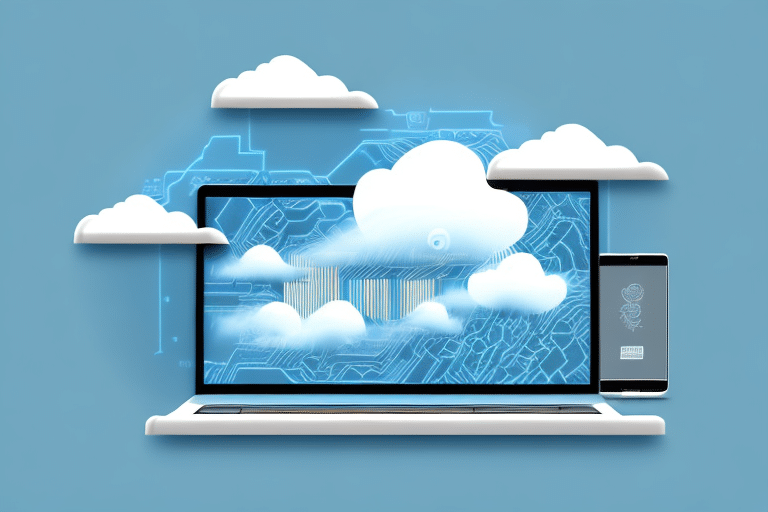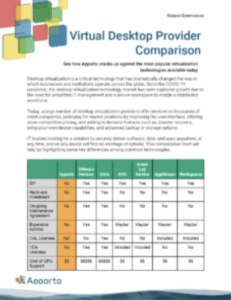Unlock the Benefits of Desktop as a Service
Desktop as a Service (DaaS) is revolutionizing the way businesses manage their desktop systems. This cloud-based solution allows organizations to access virtual desktops and applications through the internet, providing users with the ability to work from anywhere and on any device. In this article, we’ll explore the key benefits of DaaS, how it works, and what factors organizations should consider when choosing a DaaS provider.
Understanding Desktop as a Service (DaaS)
What is Desktop as a Service?
Desktop as a Service (DaaS) is a cloud-based solution that enables businesses to access virtual desktops and applications hosted on a remote server. With DaaS, businesses can provide their employees with secure and reliable access to their desktop environment from anywhere in the world, using any device with an internet connection.
One of the key benefits of DaaS is its flexibility. Because everything is hosted in the cloud, businesses can easily scale their desktop infrastructure up or down to meet the changing needs of their organization. This means that businesses can quickly and easily add or remove users, applications, and resources as needed, without having to worry about the costs and complexities of traditional desktop management.
How DaaS Works
DaaS operates entirely in the cloud, which means that users connect to their virtual desktops and applications through the internet. This eliminates the need for businesses to manage and maintain hardware and software on their own, as everything is hosted and managed by the DaaS provider.
When a user logs in to their virtual desktop, they are connected to a server in the cloud that hosts their desktop environment. This server is equipped with all the necessary hardware and software to provide a complete desktop experience, including applications, files, and settings. The user can then access their desktop from anywhere in the world, using any device with an internet connection.
DaaS vs. Traditional Desktop Management
The traditional approach to desktop management requires businesses to buy and maintain hardware and software that are installed and managed on-premise. This can be a time-consuming and expensive process, as businesses need to purchase and maintain all the necessary hardware and software, as well as provide ongoing support and maintenance to their users.
In contrast, DaaS offers businesses a cloud-based solution that eliminates the need for on-premise hardware and software. This provides numerous benefits, including improved scalability, cost savings, and simplified IT management. With DaaS, businesses can easily add or remove users, applications, and resources as needed, without having to worry about the costs and complexities of traditional desktop management.
Additionally, because everything is hosted in the cloud, businesses can take advantage of the latest hardware and software technologies without having to invest in expensive upgrades. This means that businesses can provide their employees with the latest and greatest tools and applications, without having to worry about the costs and complexities of traditional desktop management.
In conclusion, DaaS is a powerful and flexible solution that can help businesses of all sizes improve their desktop infrastructure, reduce costs, and simplify IT management. By providing employees with secure and reliable access to their desktop environment from anywhere in the world, using any device with an internet connection, businesses can improve productivity, collaboration, and overall business performance.
Key Benefits of Desktop as a Service
Desktop as a Service (DaaS) is a cloud computing solution that provides businesses with virtual desktops and applications hosted in the cloud. DaaS offers a range of benefits that can help businesses improve their productivity, reduce costs, and enhance their IT infrastructure. Let’s take a closer look at some of the key benefits of DaaS.
Cost Savings and Predictable Expenses
One of the most significant benefits of DaaS is cost savings. DaaS eliminates the need for businesses to invest in on-premise hardware and software, reducing capital expenditures and IT costs. By using virtual desktops and applications hosted in the cloud, businesses can reduce their hardware and software maintenance costs, as well as the costs associated with hardware upgrades and replacements. Additionally, DaaS offers predictable, subscription-based pricing models, so businesses can easily forecast their IT expenses without any unexpected surprises.
Enhanced Security and Compliance
DaaS providers offer robust security and compliance features that ensure the safety and privacy of sensitive data. With DaaS, all data is stored in the cloud, which means that it is not vulnerable to physical theft or damage. DaaS providers are responsible for managing and maintaining data security, so businesses can rest easy knowing their information is stored and managed in a secure and compliant environment. This is particularly important for businesses that deal with sensitive customer data, such as healthcare providers or financial institutions.
Improved Scalability and Flexibility
DaaS offers businesses the ability to easily scale their desktop infrastructure up or down to meet the changing needs of their organization. This allows businesses to add or remove virtual desktops and applications as needed, providing much-needed flexibility and agility in today’s rapidly changing business environment. With DaaS, businesses can quickly and easily provision new virtual desktops and applications, making it easier to onboard new employees or expand into new markets.
Simplified IT Management
DaaS eliminates the need for businesses to manage and maintain hardware and software on-premise, saving time and streamlining IT management. DaaS providers handle all aspects of desktop infrastructure management, including updates, patches, and maintenance, freeing up IT teams to focus on other important projects. This can be particularly beneficial for small and medium-sized businesses that do not have the resources to maintain an in-house IT department.
Increased Mobility and Remote Access
DaaS allows users to access their virtual desktops and applications from anywhere, on any device, as long as they have an internet connection. This supports remote work and enhances mobility, allowing employees to work from home, while traveling, or from any location. With DaaS, businesses can provide their employees with the flexibility they need to be productive, regardless of their location.
In conclusion, DaaS is a powerful cloud computing solution that can help businesses improve their productivity, reduce costs, and enhance their IT infrastructure. By leveraging the benefits of DaaS, businesses can stay competitive in today’s fast-paced business environment and position themselves for long-term success.
Virtual Desktop Provider Comparison
Choosing the Right DaaS Provider
Desktop as a Service (DaaS) is a cloud computing solution that allows organizations to deliver virtual desktops to end-users from a centralized location. DaaS providers offer a range of benefits, including reduced IT costs, increased flexibility, and improved security. However, choosing the right DaaS provider can be a daunting task.
Evaluating DaaS Providers
When evaluating DaaS providers, organizations should consider factors such as the provider’s track record, reputation, and customer reviews. It is essential to choose a provider with a proven track record of delivering reliable and secure virtual desktop infrastructure. Organizations should also evaluate the provider’s security and compliance features, ensuring that the provider meets industry standards and can keep sensitive data secure.
Another crucial factor to consider when evaluating DaaS providers is the provider’s ability to deliver reliable, high-performance desktop infrastructure. Organizations should look for providers with robust infrastructure and network capabilities, ensuring that end-users can access their virtual desktops quickly and without interruption.
Key Features to Look for in a DaaS Solution
When choosing a DaaS provider, organizations should look for solutions that offer key features such as scalability, availability, performance, and built-in disaster recovery capabilities. Scalability is essential for organizations that need to rapidly scale their virtual desktop infrastructure to meet changing business needs. Availability is critical for ensuring that end-users can access their virtual desktops at all times, regardless of location or device.
Performance is another essential feature to look for in a DaaS solution. Providers should offer high-performance infrastructure, ensuring that end-users can access their virtual desktops quickly and without interruption. Finally, built-in disaster recovery capabilities are essential for ensuring that organizations can quickly recover from any unexpected outages or disasters.
Assessing Provider Support and Service Level Agreements
Finally, it is crucial to evaluate the provider’s support and SLAs, ensuring that the provider offers adequate technical support as well as reliable uptime guarantees. Providers should also offer transparent pricing, with no hidden fees or unexpected charges. Organizations should look for providers with robust support teams that can offer technical assistance whenever needed.
Overall, choosing the right DaaS provider requires careful evaluation of the provider’s track record, reputation, security and compliance features, infrastructure capabilities, and support and SLAs. By choosing the right provider, organizations can enjoy the benefits of DaaS, including reduced IT costs, increased flexibility, and improved security.
Implementing Desktop as a Service
Planning Your DaaS Migration
When implementing DaaS, it is essential to plan your migration, ensuring that you have a clear plan for migrating your desktop infrastructure to the cloud. This includes identifying which applications and data need to be migrated, choosing the appropriate DaaS solution, and testing the system before going live.
Overcoming Common DaaS Implementation Challenges
There are numerous challenges that organizations may encounter during the DaaS implementation process, including issues related to user adoption, data migration, and technical infrastructure. It is essential to have a thorough plan in place to ensure a smooth and successful migration to DaaS.
Ensuring a Smooth Transition for Users
Finally, it is crucial to ensure a smooth transition for users, providing adequate training and support throughout the migration process. This will help to ensure that users can adapt to the new system quickly and easily, maximizing the benefits of the DaaS solution for everyone involved.
Conclusion
In conclusion, Desktop as a Service offers numerous benefits for businesses, including cost savings, enhanced security, scalability, and simplified IT management. To fully unlock these benefits, organizations should carefully evaluate DaaS providers, choose solutions that offer the key features they need, and properly plan and execute their migration to the cloud. By taking these steps and implementing DaaS effectively, businesses can gain a competitive advantage and achieve greater success in the digital economy.



